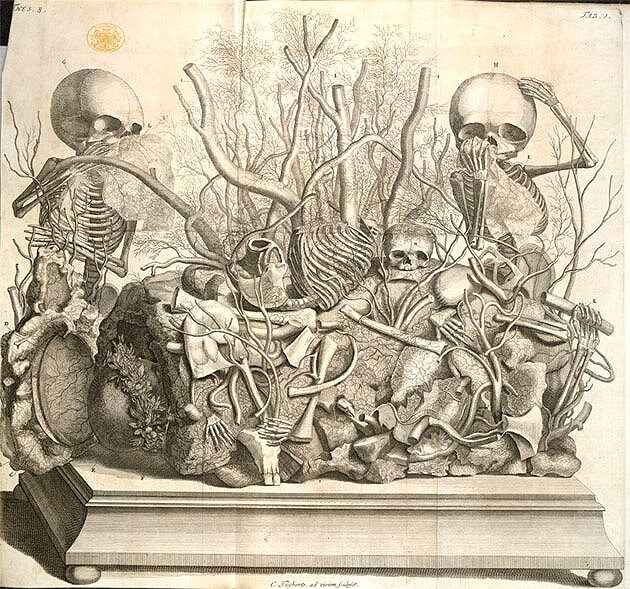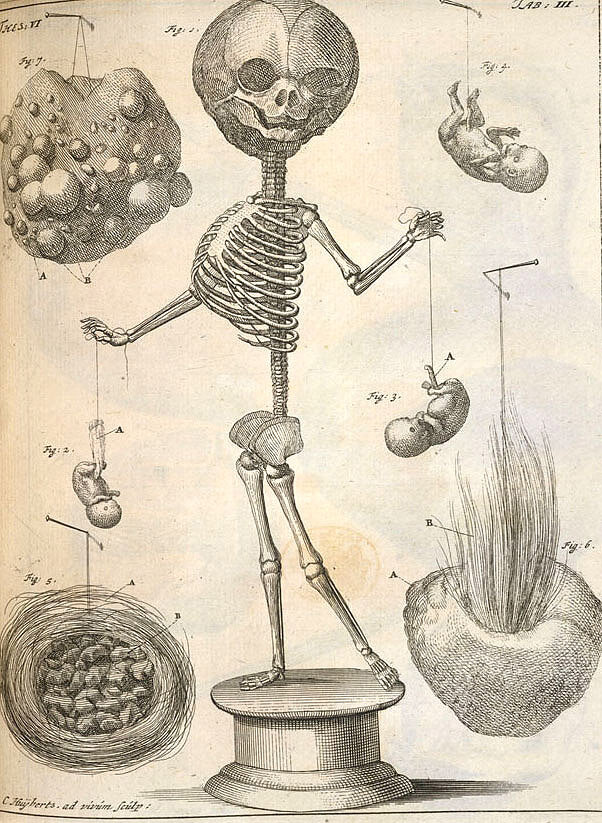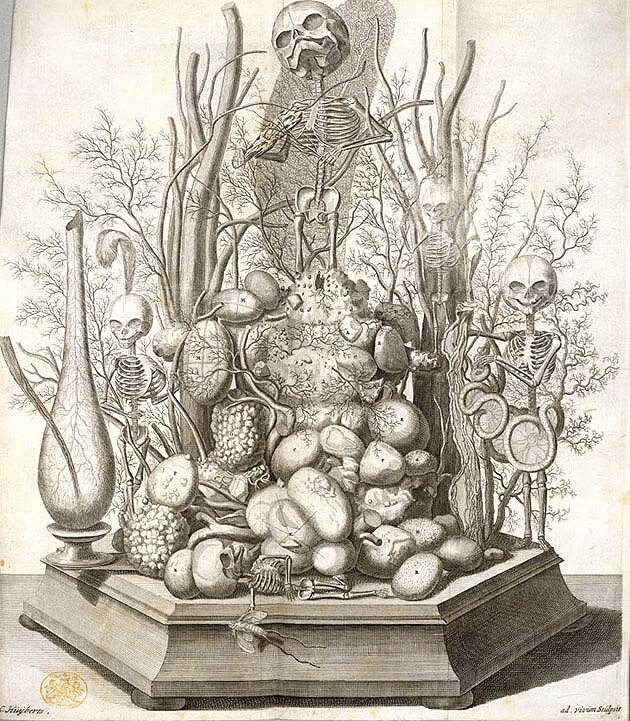You Won't Find These Arrangements at the Florist
 These infant skeletons are blowing their noses with the durable smoothness of cranial meninges
These infant skeletons are blowing their noses with the durable smoothness of cranial meninges Embryo puppets and I'm not sure what those are on the bottom, anyone?
Embryo puppets and I'm not sure what those are on the bottom, anyone? A mountain of kidney stones and a forest of vessels and capillariesThe imaginative Frederik Ruysch (1638-1731), part botanist, part anatomist, was the first to develop a form of anatomical preservation. He preserved his specimens in a secret liquor balsamicum and injected preserving chemicals into vessels to show their pathways (Ruysch failed to record his 'recipies' and so most of his secrets are now lost). This allowed him to create these morbid scenes, which he showcased to the public around Amsterdam. According to the British Library,
A mountain of kidney stones and a forest of vessels and capillariesThe imaginative Frederik Ruysch (1638-1731), part botanist, part anatomist, was the first to develop a form of anatomical preservation. He preserved his specimens in a secret liquor balsamicum and injected preserving chemicals into vessels to show their pathways (Ruysch failed to record his 'recipies' and so most of his secrets are now lost). This allowed him to create these morbid scenes, which he showcased to the public around Amsterdam. According to the British Library,
"He thought of these exhibits as highly educational, but also felt that they should be decorated 'prettily and naturally...Small skeletons were positioned in 'geological' landscapes, crying into handkerchiefs, wearing strings of pearls, or playing the violin. The 'botanical' landscapes were also made up of body parts: kidney stones or tissue from the lungs would become bushes, grass or rocks."
His flare for the dramatic also carried over into his dissections.
"His public dissections would be held by candlelight and accompanied by music and refreshments."
If only my gross human anatomy lab had that.Unfortunately the preserved specimens are no longer around, but thankfully the engraver Cornelius Huyberts meticulously detailed the arrangements. Ruysch was among the first anatomists to use anatomy as art, something that has been carried on throughout the centuries. Even today we have the eccentric and highly successful Gunther von Hagens' Bodyworlds.
